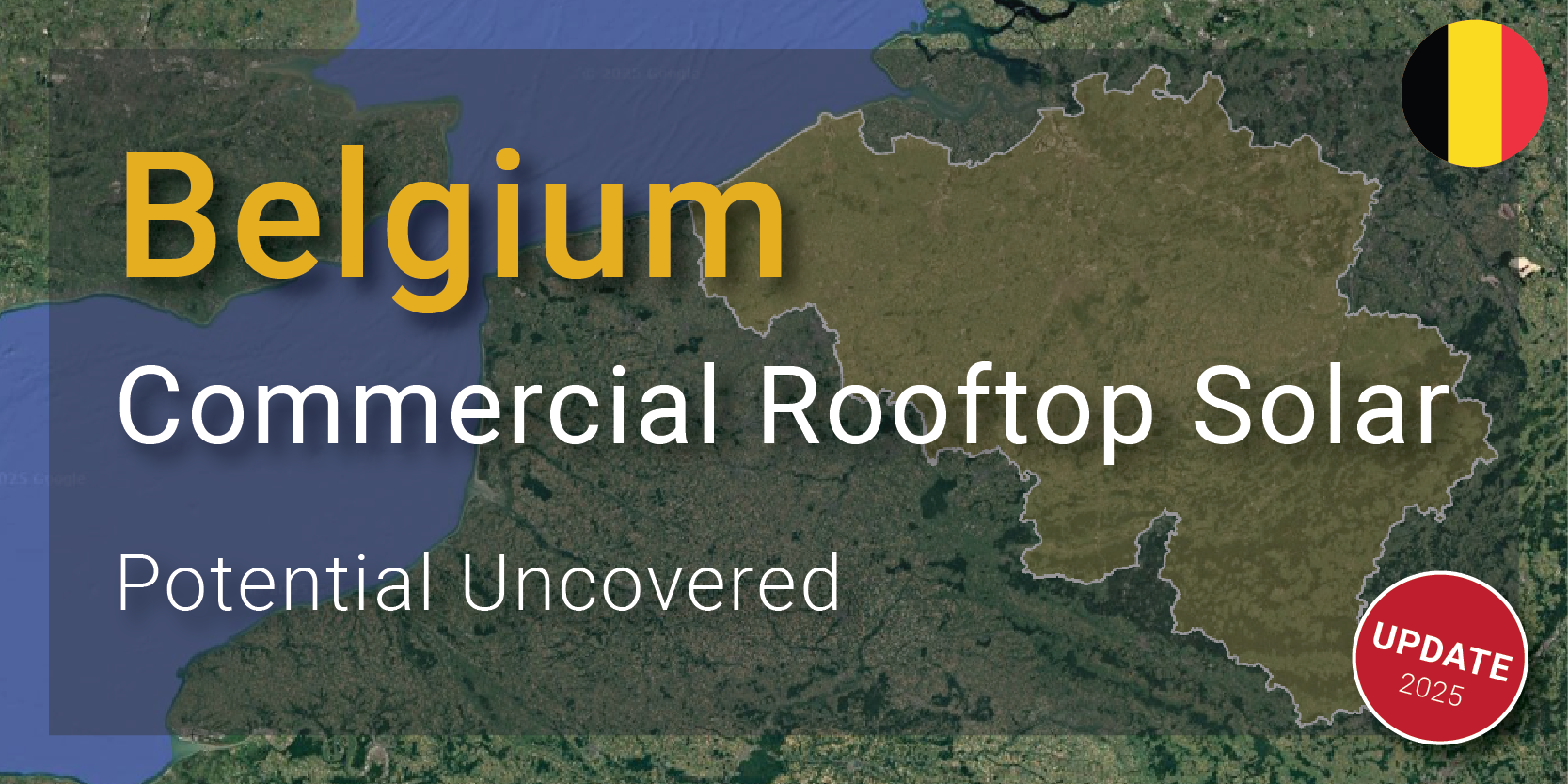Commercial Rooftop Solar Potential in Belgium
Belgium’s solar market continues to mature — but our latest data reveals that there’s still enormous untapped potential hidden across commercial and industrial rooftops.
From Flanders’ industrial zones to Wallonia’s logistics corridors and Brussels’ dense urban grid, Belgium’s rooftops tell a story of steady growth, regional contrasts, and a market that’s entering its second phase of adoption.
Planno has tracked Belgium’s rooftop solar landscape since 2023. Two years later, the transformation is visible in both scale and distribution. Let’s look at what’s changing—and what’s next for developers.
64,446
Total C&I Rooftops
22 GW
Total Solar Potential
30%
Solar Adoption
Why Belgium’s Market Still Matters
Belgium remains one of Europe’s most dynamic C&I solar markets, supported by strong industrial energy demand and regionally driven incentives. While residential solar has reached impressive levels, the commercial and industrial segment still holds the key to the country’s decarbonization targets.
High electricity costs and the drive for corporate sustainability have made rooftop solar increasingly strategic, especially for energy-intensive sectors in Flanders and Wallonia. The upcoming regulatory updates for 2026, focused on balancing grid stability with distributed generation, are further accelerating corporate interest in on-site energy generation.
What the Rooftop Solar Data Reveals
Belgium’s C&I rooftop base grew by 11.1% since late 2023 — adding more than 4,200 new rooftops suitable for solar. Solarized capacity increased by roughly 1.1 GW, while untapped capacity still exceeds 11 GW.
Rooftops between 800 m² and 4,000 m² continue to represent the largest opportunity. These mid-size buildings combine high technical suitability with manageable permitting and grid-connection processes—ideal for EPCs and developers looking for scalable portfolios.

Since 2023, Belgium has entered what can be described as the second wave of C&I rooftop solar adoption. Growth is now being driven by data-driven prospecting and improved grid readiness, rather than early subsidies.
In Flanders, where most industrial rooftops are concentrated, solar adoption rose from 23 % to 35 % in key segments. Wallonia recorded an even stronger relative growth, up to 26.6 % from 14 %, showing increasing momentum among logistics and manufacturing companies. Meanwhile, Brussels-Capital, though smaller in total potential, is setting benchmarks in adoption density — reaching 74 % among large rooftops above 8,000 m².
Overall, Belgium added 1.1 GW of rooftop capacity across commercial and industrial buildings, narrowing the gap toward its national renewable goals.
Regional Highlights
📍Flandres
- Total Rooftops: 45,298
- Solar Potential: 16.6 GWp
- Adoption: 31.3 %
Flanders remains the powerhouse of Belgian solar, with nearly 70 % of the total market. Growth is strongest among rooftops between 2,000 m² and 8,000 m²—segments benefiting from strong industrial clusters and grid accessibility.
📍Wallonia
- Total Rooftops: 18,043
- Solar Potential: 5.1 GWp
- Adoption: 26.6 %
Once behind Flanders, Wallonia is catching up rapidly, driven by industrial estates along key transport routes. Developers are shifting attention here as available roof area and local policies align.
📍Brussels-Capital
- Total Rooftops: 1,105
- Solar Potential: 459 MWp
- Adoption: 36.7 %
High-density environment but high utilization—Brussels offers strong examples of how policy, visibility, and corporate engagement can drive adoption.
Key Insights on Belgium’s Rooftop Solar Potential
- Steady growth: +11 % rooftop increase and +1.1 GW capacity gain since 2023.
- Mid-size buildings lead: 800–4,000 m² rooftops represent the highest-potential, fastest-growing segment.
- Regional contrasts persist: Flanders leads in total potential; Wallonia leads in relative growth.
- Data-driven expansion: Developers are increasingly relying on platforms like Planno to prioritize viable leads in saturated markets.
- Still half untapped: Belgium’s 11.7 GW of remaining C&I rooftop potential remains a goldmine for 2026 projects.
How Planno Unlocks Rooftop Solar Opportunities
Planno makes this level of rooftop market intelligence actionable. Our platform uses geospatial AI to identify, size, and qualify rooftops for solar in every region — so you don’t have to guess where to go next. We also help you contact building owners and managers directly, turning intelligence into leads.
🚀 Want to explore the commercial rooftops solar potential in Belgium?
FAQ
What makes Belgium’s rooftop solar market so promising right now?
Belgium combines strong industrial demand, supportive regional frameworks, and thousands of still-untapped C&I rooftops. Even with steady adoption, there’s ample room for growth—especially as businesses seek cost stability and progress toward decarbonization targets.
Which rooftop sizes offer the biggest opportunities in Belgium?
Mid-sized commercial roofs (roughly 800–4,000 m²) tend to be the sweet spot: big enough to deliver meaningful savings and portfolio scale, yet straightforward to develop and connect. Larger sites remain attractive for aggregated capacity where grid and logistics allow.
How can I find qualified leads in Belgium?
Use Planno to zero-in on the right buildings, fast. Our geospatial AI helps you identify, pre-qualify, and prioritize rooftops—and connect with decision-makers—so you can focus your pipeline on sites most likely to move forward.
